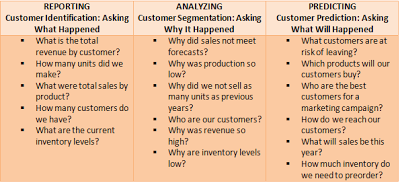Chapter 11
Building a Customer-Centric Organization – Customer Relationship Management
Customer relationship management (CRM)
CRM enables an organization to;
Recency, Frequency, and Monetary Value
An organization can find its most valuable customers by using a formula that industry insiders call FRM;
The Evolution of CRM

Using Analytical CRM to Enhance Decisions
Customer Relationship Management Success Factors
CRM success factors include;
CRM enables an organization to;
- Provide better customer service
- Make call centers more efficient
- Cross sell products more effectively
- Helps sales staff close deals faster
- Simplify marketing and sales processes
- Discover new customers
- Increase customer revenues
Recency, Frequency, and Monetary Value
An organization can find its most valuable customers by using a formula that industry insiders call FRM;
- How recently a customer purchased items (recency)
- How frequently a customer purchased items (frequency)
- How much a customer speeds on each purchased (monetary value)
The Evolution of CRM
- CRM reporting technologies help organizations identify their customers across other applications.
- CRM analysis technologies help organizations segment their customers into categories such as best and worst customers.
- CRM predicting technologies help organizations predict customer behavior, such as which customers are at risk of leaving.

Using Analytical CRM to Enhance Decisions
- Operational CRM – supports traditional transactional processing for day-to-day front-office operations or systems that deal directly with the customers
- Analytical CRM – supports back-office operations and strategic analysis and includes all system that do not deal directly with the customers
Customer Relationship Management Success Factors
CRM success factors include;
- Clearly communicate the CRM strategy
- Define information needs and flows
- Build an integrated view of the customer
- Implement in iterations
- Scalability for organizational growth
No comments:
Post a Comment